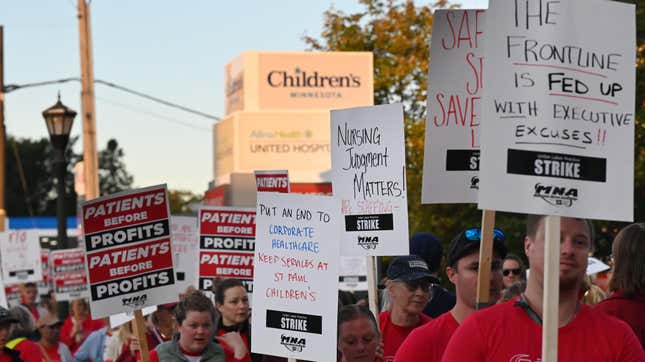‘This Job Has to Get Better or I Have to Leave’: 15,000 Minnesota Nurses Are on Strike
It's the largest private-sector nurse strike in U.S. history.
In Depth

This is the fourth time Kelley Anaas, an ICU nurse, has gone on strike. She’s worked at the same hospital for 14 years but now, “this job has to get better or I have to leave,” Anaas told Jezebel from the picket line. “As hard as it is and how defeated I feel at the end of every shift…I can’t do it for the rest of my career.”
Anaas is one of 15,000 nurses in Minnesota who walked off the job for three days this week. It’s the largest strike of private nurses in American history. The workers want the hospital to prioritize hiring local nurses, instead of relaying on agencies and travel nurses to fill staffing shortages. They also want paid family leave and safety policies implemented, both regarding guaranteed PPE as well as paid leave for assaulted staff members. “I would love to do this for the rest of my career, but it’s been physically, mentally and emotionally damaging,” Anaas, who’s head of her chapter of the Minnesota Nurses Association, said. “It’s not sustainable what we’re being asked to do.”
-

-

-

-

-

-

-

-

-

-

-

-

-

-

-

-

-

-

-

-

-

-

-

-

-

-

-

-

-

-

-

-

-

-

-

-

-

-

-

-








































